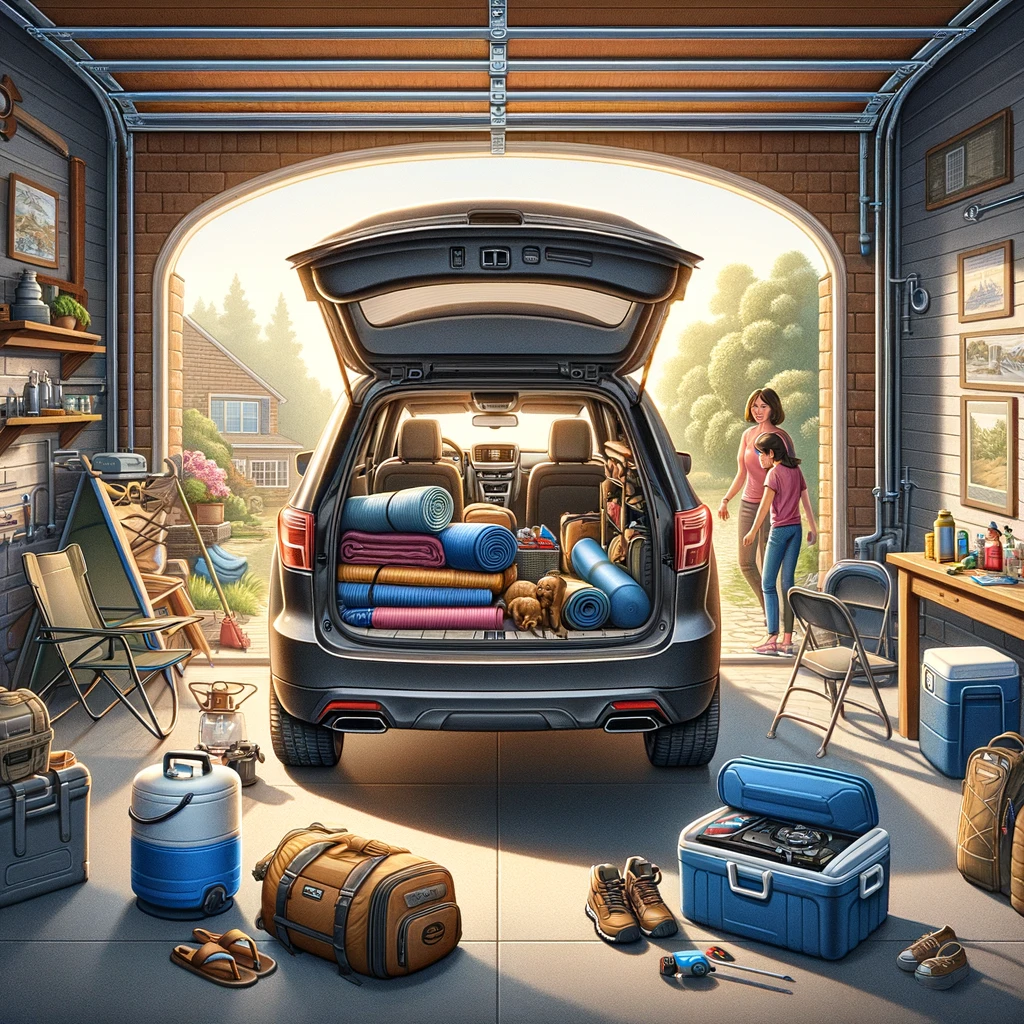Efficient packing is crucial for a successful car camping adventure. Whether you’re a seasoned camper or just starting out, knowing how to pack your vehicle effectively can significantly impact your outdoor experience. This guide will provide top strategies to maximize space and ensure you have everything you need for your next camping trip.
Use a Bin System
A bin system is one of the most effective ways to organize your camping gear. Categorize your equipment into different bins based on their use. For example, have a kitchen bin for all your cooking equipment, utensils, and non-perishable food items.
A separate camping gear bin can house your tent, sleeping bags, and other essential outdoor equipment. Consider having a clothing bin for each person or sorted by type of clothing. This system makes packing and unpacking easier and helps keep your campsite organized throughout your stay.
Pack in Order of Use
When loading your car, think about accessibility. Pack items you’ll need first, like your tent and initial setup gear, near the top or in easily reachable areas. Less frequently used items can be stored at the bottom or back of the car. This strategy ensures you’re not digging through all your gear to find what you need when you arrive at your campsite.
Utilize Soft-Sided Bags
Opt for duffel bags or stuff sacks instead of rigid containers for clothing and sleeping bags. These soft-sided options can be squeezed into odd spaces more easily, allowing you to make the most of every nook and cranny in your vehicle. This flexibility is especially useful when you’re trying to maximize space and comfort while car camping.
Maximize Vertical Space
Don’t forget to use the full height of your vehicle when packing. Stack bins and boxes carefully, ensuring heavier items are at the bottom for stability. Use hanging organizers on the backs of seats for additional storage of smaller items. If you are short on space, consider investing in a roof box or cargo bag for extra storage capacity.
Create a Detailed Packing List
A comprehensive checklist is your best friend when preparing for a camping trip. Categorize your list (e.g., kitchen, sleeping, clothing) for easier packing and checking. This ensures you don’t forget any essential items and helps you avoid overpacking. Review and refine your list after each trip to make it more efficient for future adventures.
Pack a Day-of-Arrival Box
Prepare a box or bag with items you’ll need immediately upon arrival at your campsite. This should include your tent, sleeping gear, flashlights or headlamps, snacks, water, and basic toiletries. Having these essentials easily accessible will make setting up camp much smoother, especially if you arrive late in the day.
Use Space-Saving Techniques
Employ clever packing techniques to save space. Roll clothes instead of folding them to reduce wrinkles and save space. Use compression sacks for sleeping bags and other bulky items. Nest smaller items inside larger ones, such as storing spices or small kitchen tools inside cooking pots.
You might want to use vacuum-sealed bags for clothing and bedding to significantly reduce their volume. When possible, utilize multi-purpose items, such as a sarong that can serve as a towel, blanket, or even a makeshift bag. By thinking creatively about how to pack each item, you can maximize every inch of available space in your vehicle.
Plan Your Meals
Meal planning is crucial for avoiding overpacking food. Pre-measure ingredients and pack them in reusable containers. Use a cooler for perishables, packing it last for easy access. This not only saves space but also makes meal preparation at the campsite much more manageable.
Consider preparing some meals in advance and freezing them, which can serve as additional ice packs in your cooler. Plan meals that use similar ingredients to reduce the number of items you need to bring. Don’t forget to account for snacks and beverages, but be realistic about how much you’ll consume to avoid unnecessary waste and excess weight.
Don’t Forget the Essentials
Always pack these crucial items: a first aid kit, navigation tools (maps, compass, GPS), and emergency supplies (extra food, water, and warm clothing). These items ensure you’re prepared for unexpected situations and can enjoy your trip safely. Include a multi-tool or Swiss Army knife, as these versatile tools can be invaluable.
Pack a basic repair kit for your gear, including duct tape, zip ties, and a sewing kit. Consider bringing a portable power bank to keep your electronic devices charged, especially if you’re relying on a phone for navigation or emergency communication. Remember, these essentials could make a significant difference in your comfort and safety during your camping trip.
Do a Test Pack
Before your trip, do a test pack of your car. This allows you to ensure everything fits and is accessible. It’s much better to make adjustments at home than to realize you’ve overpacked or can’t reach important items when you’re already on the road. During this test pack, simulate accessing different items as you would at the campsite.
This practice run can help you identify any logistical issues with your packing strategy. It’s also an opportunity to familiarize yourself with where everything is packed, which can be especially helpful if you need to set up camp in low light conditions. If you find you’re struggling to fit everything, use this as a chance to reevaluate what’s truly necessary for your trip and what can be left behind.
Conclusion
The key to successful car camping is balancing comfort with efficiency. By following these strategies, you’ll be well-prepared for your outdoor adventure while maximizing the space in your vehicle. For more detailed information on car camping essentials and techniques, check out our ultimate guide to car camping for beginners.
With these packing strategies in mind, you’re now ready to embark on your car camping adventure with confidence. Happy camping!

Leave a Reply